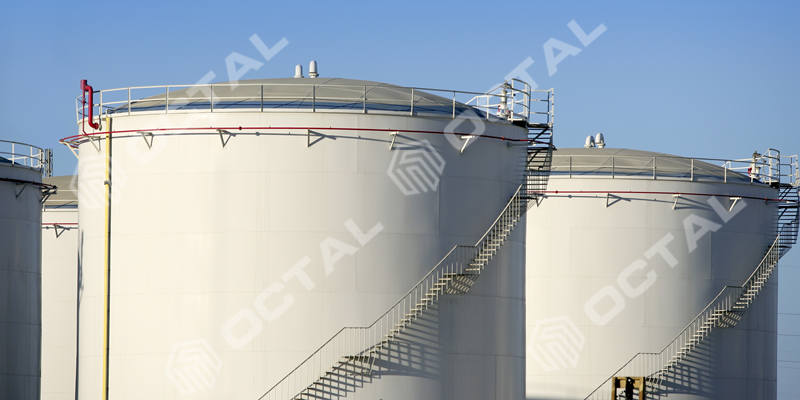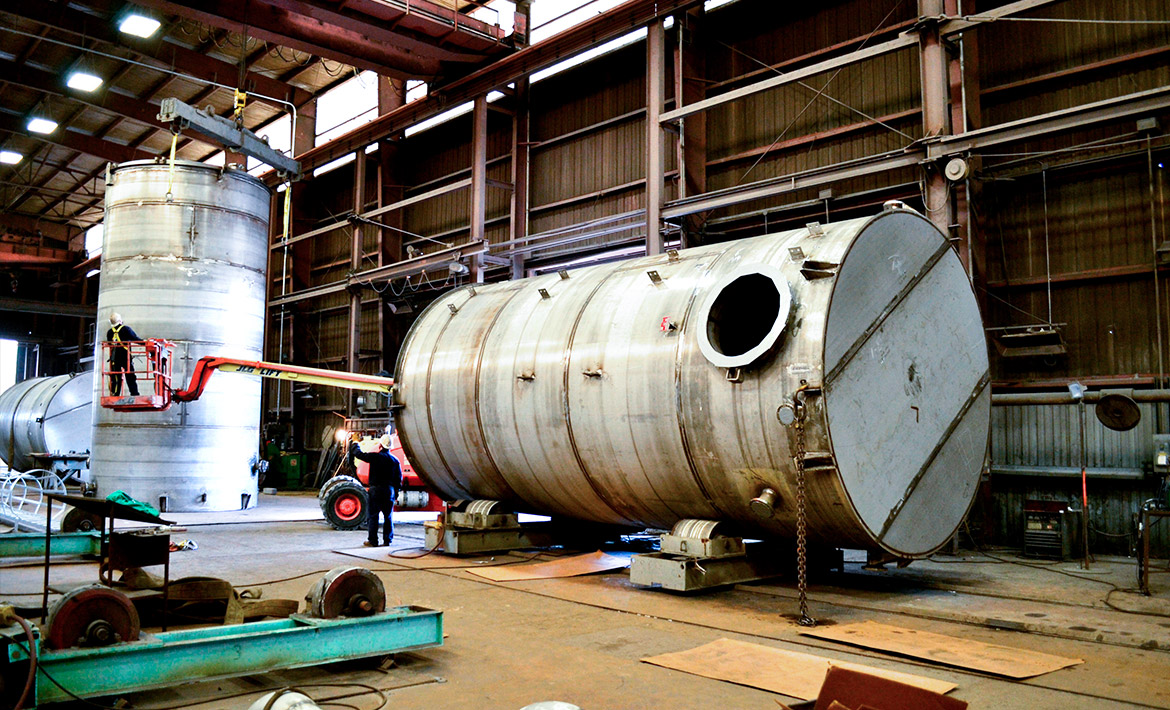The Critical Role of API 650 Welding Inspection in Quality Assurance
Wiki Article
How Welding Examination Functions: A Comprehensive Guide for Professionals
Welding evaluation plays a vital function in making certain the security and integrity of welded frameworks. It involves an organized approach that consists of both aesthetic examination and advanced screening approaches. Experts should familiarize themselves with essential standards and laws governing the sector. Comprehending the typical flaws that can develop during welding is crucial. This overview will certainly check out these components carefully, giving understandings right into the procedures that copyright high quality and integrity in welding.Understanding the Relevance of Welding Assessment
While several might underestimate the significance of welding evaluation, it plays an essential role in making certain the integrity and safety of welded structures. Effective welding assessment recognizes prospective problems and imperfections that can jeopardize architectural toughness and bring about devastating failures. The assessment procedure incorporates different techniques, such as visual evaluations, ultrasonic testing, and radiographic assessments, each adding to the total evaluation of weld quality.
In enhancement to protecting the architectural stability, welding inspection guarantees compliance with industry requirements and client requirements. By ensuring that welds fulfill called for resistances and features, examinations assist preserve the integrity and long life of parts in numerous applications, from building to aerospace. A strenuous inspection procedure fosters a society of high quality and responsibility amongst welders and makers. Ultimately, welding inspection is not simply a step-by-step action; it is a vital practice that underpins the safety and security and performance of engineered systems across diverse markets.
Trick Requirements and Regulations in Welding Assessment
The structure of reliable welding assessment hinges on adherence to established laws and criteria. Various companies, such as the American Welding Society (AWS) and the American National Standards Institute (ANSI), set forth standards that guarantee quality and security in welding practices. Key standards, such as AWS D1.1 for structural welding and ASME Section IX for stress vessels, provide thorough requirements for welding credentials, inspections, and procedures. Governing structures, including those from the Occupational Safety and Health And Wellness Administration (OSHA), required safety and security techniques and worker defenses in welding atmospheres. Compliance with these criteria is essential for attaining regular weld high quality and minimizing the risk of failures. In addition, global standards like ISO 3834 further improve international uniformity in welding inspection practices. Professionals need to stay informed concerning these laws to guarantee that their evaluation methods straighten with industry assumptions and legal demands, therefore safeguarding both personnel and architectural stability.Preliminary Preparation and Visual Examination Techniques

Efficient welding examination begins with a detailed pre-inspection checklist that ensures all necessary conditions are satisfied prior to the actual assessment occurs. Following this prep work, visual issue identification plays an essential function in assessing weld high quality, permitting assessors to find concerns such as fractures or incorrect combination. Together, these strategies create the foundation for an effective welding examination process.
Pre-Inspection List
Before starting any kind of welding evaluation, a comprehensive pre-inspection checklist is necessary to ensure that all essential prep work are finished which visual evaluation techniques are efficiently utilized. Trick elements of this list consist of confirming the welding procedure specification (WPS), ensuring all devices is adjusted and in excellent functioning problem, and validating that the assessor has the needed certifications. In addition, it is important to assess any previous evaluation records and to evaluate the workplace for safety and security dangers. The examiner ought to also verify that all relevant documents, such as product certificates and assessment documents, is conveniently available. Completing this list aids to establish a solid foundation for an effective examination process, boosting the reliability of the outcomes gotten.Visual Problem Recognition
A successful aesthetic flaw recognition procedure starts with cautious first preparation and the application of well established visual inspection strategies. Examiners should assure that the welding area is clean and well-lit, as sufficient visibility is vital for finding problems. A detailed evaluation of the weld joint's surface enables the identification of interruptions, such as fractures, undercuts, or porosity. Examiners commonly utilize devices like multiplying glasses or mirrors to improve their sight of hard-to-reach locations. Additionally, they should know with the specific welding standards and standards relevant to the job. By sticking to these methods, inspectors can efficiently determine possible concerns, protecting the my site stability of the weld and compliance with sector criteria.Non-Destructive Testing Methods: A Summary
Non-destructive testing (NDT) approaches play a necessary role in the welding evaluation procedure by making certain the stability and dependability of bonded structures without causing any damage (API 650 Welding Inspection). These techniques allow assessors to review the top quality of welds while maintaining the parts being examined. Typical NDT methods include ultrasonic screening, radiographic screening, magnetic bit testing, and dye penetrant testing, each offering unique benefitsUltrasonic screening employs high-frequency acoustic waves to discover inner flaws, while radiographic testing utilizes X-rays or gamma rays to envision the internal framework of welds. try this web-site Magnetic bit screening reveals surface area and near-surface flaws by using a magnetic field and iron fragments to the weld location. Dye penetrant screening highlights surface-breaking imperfections with the application of a colored color. With each other, these NDT methods offer crucial insights right into weld top quality, allowing specialists to make educated choices relating to security and compliance in welding applications.
Common Problems and Their Effects
Identifying usual issues in welded joints is crucial for keeping architectural honesty and safety and security. Different defects can develop throughout the welding process, each lugging prospective ramifications for the total performance of the structure. Porosity, defined by small gas pockets within the weld, can damage the joint and compromise its load-bearing ability. Fractures might develop due to thermal stress and anxiety or improper cooling, leading to prospective failing under stress. Incomplete fusion happens when the weld metal does not fully bond with the base material, leading to weak joints that may not hold up against desired lots. Damaging, where the base metal is eroded, can likewise minimize the effective cross-section of the weld. Furthermore, too much reinforcement can produce anxiety focus that could bring about failing. Identifying these flaws promptly permits for rehabilitative measures, guaranteeing the durability and integrity of welded structures in vital applications.Devices and Tools Made Use Of in Welding Examination
Efficient welding inspection depends on a variety of specialized tools and equipment to look at more info assure the top quality and stability of bonded joints. Vital tools consist of visual inspection devices, such as magnifying borescopes and glasses, which allow examiners to closely examine welds for surface area flaws. Non-destructive testing (NDT) techniques, such as ultrasonic screening, radiographic testing, and magnetic bit screening, are essential for recognizing internal flaws without damaging the material.Dimension tools, including calipers and weld assesses, help determine and assess dimensions compliance with requirements. Furthermore, firmness testers review the mechanical properties of welded joints. Personal protective tools (PPE) is also necessary, securing the safety of assessors while functioning in potentially unsafe environments (API 650 Welding Inspection). Each tool serves a details objective, jointly improving the effectiveness of welding inspection and adding to the integrity of completed tasks
Frequently Asked Inquiries
What Qualifications Are Required to End Up Being a Welding Inspector?
To become a welding assessor, people generally need pertinent qualifications, such as AWS CWI or CSWIP, together with experience in welding processes, design concepts, and knowledge of inspection methods, security criteria, and suitable codes.How Frequently Should Welding Inspections Be Performed?
Welding evaluations need to be carried out frequently, ideally at different job stages, including pre-weld, during-weld, and post-weld. Regularity might likewise depend on sector standards, project requirements, and the intricacy of the welds included.Can Welding Defects Be Fixed After Evaluation?

Yes, welding problems can commonly be fixed after inspection. Depending upon the seriousness and sort of flaw, ideal techniques such as reworking or additional welding may be employed to restore architectural integrity and safety and security compliance.
What Industries Require Regular Welding Examinations?

Different markets, including building, production, aerospace, and auto, need normal welding inspections - API 650 Welding Inspection. These examinations guarantee adherence to security criteria and top quality control, reducing threats connected with architectural integrity and operational efficiency in welded elements
Just how Do I Choose a Welding Examination Service?
To choose a welding evaluation service, one must think about qualifications, experience, accreditations, and sector online reputation. Furthermore, reviewing client testimonials and assuring the solution meets relevant requirements can help assure top quality examinations and trusted results.
While numerous might take too lightly the significance of welding assessment, it plays a vital function in making sure the integrity and safety of welded frameworks. Key standards, such as AWS D1.1 for structural welding and ASME Area IX for pressure vessels, provide detailed standards for welding qualifications, examinations, and treatments. Reliable welding examination begins with an extensive pre-inspection list that assures all necessary problems are satisfied before the real evaluation takes area. Prior to beginning any welding inspection, a comprehensive pre-inspection list is important to ensure that all essential preparations are finished and that aesthetic inspection techniques are efficiently utilized. Non-destructive testing (NDT) techniques play a vital duty in the welding assessment process by ensuring the honesty and integrity of welded frameworks without triggering any type of damages.
Report this wiki page